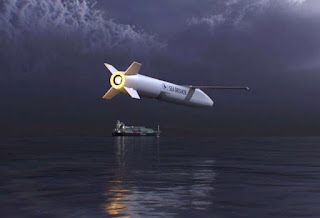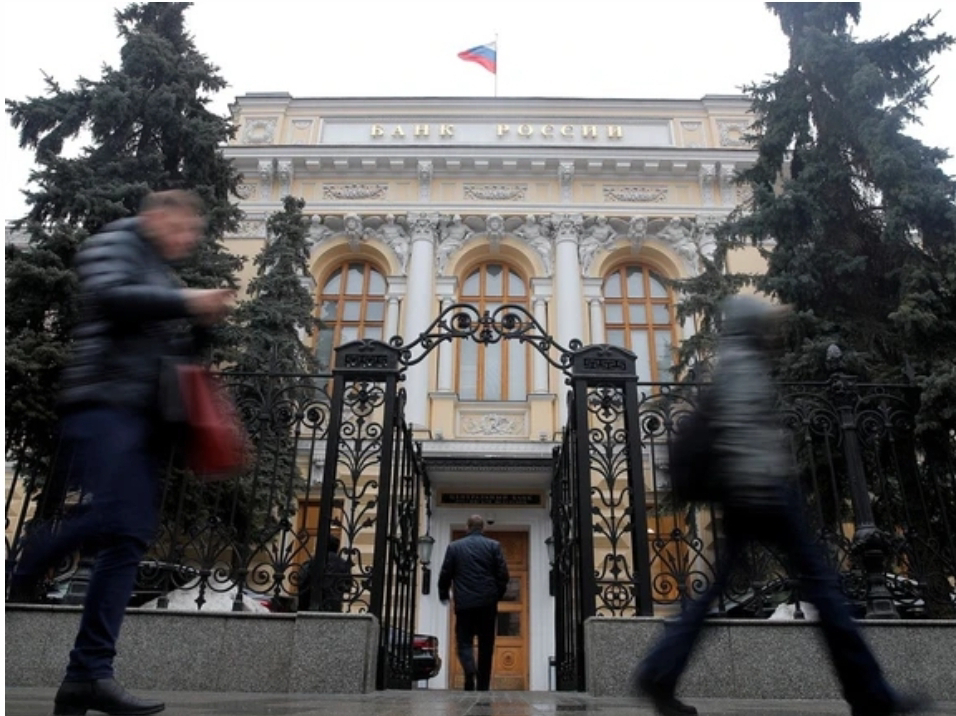Senjata buatan Israel sedang menuju ke Ukraina.-Israeli-made weapons are heading to Ukraine.
Rafael Advanced Defense Systems.
Feb28, 2022 - 5:30 AM.
Ketika negara-negara anggota NATO mengumumkan bahwa mereka mengirim senjata modern ke Ukraina, senjata buatan Israel juga sedang dalam perjalanan, bahkan ketika Yerusalem berjalan dengan tali diplomatik setelah invasi Rusia ke negara Eropa.
Pada Minggu malam, Belanda mengumumkan bahwa mereka akan mengirim 50 sistem senjata anti-tank Panzerfaust 3 dengan 400 roket dan 200 rudal anti-pesawat Stinger. Amsterdam juga akan memasok 100 senapan sniper dan 3.000 amunisi tambahan.
Situs web Pengakuan Angkatan Darat mengatakan bahwa semua peralatan dan senjata militer akan diangkut ke negara Eropa Timur oleh pesawat angkut C-17 Amerika, yang berangkat dari pangkalan udara Eindhoven dan sekali di darat, akan diangkut melalui jalan darat ke Ukraina.
Panzerfaust 3 adalah granat berpeluncur roket portabel yang dapat menembus 900 mm (35 inci) armor baja atau 700 mm armor reaktif eksplosif dan menghancurkan tank seperti T-72 dan T-80 Soviet.
Diproduksi oleh Dinamit Nobel Pertahanan Jerman, anak perusahaan dari Sistem Pertahanan Rafael Advanced Israel, senjata anti-tank Panzerfaust 3-IT diperkirakan akan tiba di Ukraina untuk mengisi kembali dan meningkatkan stok senjata yang mampu menghancurkan baju besi Rusia.
Sebuah senjata anti-tank sekali pakai, Panzerfaust memiliki jangkauan tempur yang efektif dari 300 meter (984 kaki) terhadap target bergerak dan hingga 600 meter terhadap target statis.
Dioperasikan oleh seorang prajurit tunggal, dapat digunakan untuk melawan tank, kendaraan lapis baja, emplacements yang diperkuat dan bunker ringan. Pesawat stasioner juga dapat dipukul dengan itu.
Sementara Rafael Advanced Defense Systems dan Kementerian Pertahanan Israel tidak berkomentar, Kanselir Jerman Olaf Scholz mengatakan pada hari Sabtu bahwa ia telah memberi wewenang kepada Belanda untuk mengirim Ukraina peralatan militer.
Jerman tidak perlu meminta persetujuan Israel untuk mentransfer senjata karena pabrik di Burbach hanya diakuisisi oleh Rafael pada tahun 2004, dan Berlin telah membiayai pengembangan senjata sejak pertama kali diperkenalkan pada tahun 1973.
Dalam perubahan kebijakan lama, pemerintah Jerman mengatakan pada hari Sabtu, "Invasi Rusia ke Ukraina menandai titik balik. Ini mengancam seluruh tatanan pasca-perang kita. Dalam situasi ini, adalah tugas kita untuk melakukan yang terbaik untuk mendukung Ukraina dalam mempertahankan diri terhadap tentara invasi Vladimir Putin. Jerman berdiri di sisi Ukraina."
Tunduk pada meningkatnya kritik, pemerintah Jerman terpaksa meninggalkan praktiknya karena tidak mengizinkan transfer senjata mematikan ke zona konflik.
Dengan perubahan kebijakan tersebut, Jerman akan mengirim 1.000 senjata anti-tank serta 500 sistem pertahanan anti-pesawat Stinger buatan AS ke Ukraina. Stinger man-portable air-defense system (MANPAD) mampu menghancurkan target terbang tingkat rendah seperti helikopter, UAV, pesawat terbang dan rudal jelajah pada jarak hingga 4.800 meter (sekitar tiga mil).
Israel telah berusaha untuk mencapai keseimbangan antara Rusia dan Ukraina, dan pada Minggu malam Perdana Menteri Naftali Bennett dikatakan telah menolak untuk menjual senjata setelah ia ditanya oleh Presiden Ukraina Volodymyr Zelensky.
Menurut siaran publik KAN, ketika Zelensky meminta bantuan militer, Bennett menanggapi dengan "kesopanan diplomatik."
Yerusalem di masa lalu telah menghentikan Amerika Serikat dari menjual Ukraina sistem pertahanan rudal Iron Dome dalam upaya untuk mempertahankan hubungan dekatnya dengan Rusia, yang merupakan pemain kunci di Suriah di mana IDF melakukan serangan udara terhadap target Iran dan Hizbullah.
Israel telah menjual sistem senjata senilai miliaran dolar ke negara-negara Eropa Timur yang takut akan agresi Rusia sejak mencaplok Semenanjung Krimea pada tahun 2014. Pada tahun 2021, ekspor pertahanan Israel mencapai $ 8,3 miliar, dengan 30% t pergi ke Eropa.
Penjualan termasuk rudal, roket, sistem pertahanan udara, komunikasi, drone, sistem intelijen, radar dan sistem peringatan dini, amunisi dan persenjataan, pesawat berawak, avionik, pengamatan dan elektro-optik.
Rafael juga telah menjual rudal elektro-optik SPIKE generasi ke-5 kepada 18 anggota Uni Eropa dan NATO, yang dapat mentransfer senjata ke Ukraina jika diberi lampu hijau dari Yerusalem.
Rudal ini mampu menembus 39 inci baju besi, dan dapat dioperasikan baik dalam serangan langsung atau navigasi mid-course berdasarkan koordinat target saja. Mode ini memungkinkan kekalahan target tersembunyi jarak jauh dengan presisi yang tepat, penilaian kerusakan, dan perolehan kecerdasan real-time.
Dengan kemampuan non-line-of-sight, ia memiliki jangkauan hingga 32 km (20 mil) dan dapat ditembakkan dari kendaraan, helikopter, kapal dan peluncur darat. Ini memiliki pencari elektro-optik canggih yang mencakup kemampuan pelacak target cerdas dengan fitur kecerdasan buatan, meningkatkan mematikannya.
Dirancang terhadap target modern baru dengan karakteristik tanda tangan dan sensitif waktu yang rendah, rudal ini juga mencakup peningkatan alokasi target pihak ketiga baru (networked-enabled) dengan perakitan unit pengukuran inersia tertanam yang memungkinkan rudal ditembakkan ke koordinat target grid termasuk armor canggih dan sistem perlindungan, menjadikannya satu-satunya rudal di dunia dengan kemampuan ini.
----------------------=================
As NATO member states announce that they are shipping modern weapons to Ukraine, Israeli-made weapons are also on their way, even as Jerusalem walks a diplomatic tightrope following Russia’s invasion of the European nation.
On Sunday evening, the Netherlands announced that it would send 50 Panzerfaust 3 anti-tank weapon systems with 400 rockets and 200 Stinger anti-aircraft missiles. Amsterdam will also supply 100 sniper rifles and 3,000 additional munitions.
The Army Recognition website said that all the military equipment and weapons will be transported to an Eastern European country by American C-17 transport aircraft, which departed from Eindhoven airbase and once on the ground, will be transported by road to Ukraine.
The Panzerfaust 3 is a man-portable rocket-propelled grenade that can penetrate 900 mm. (35 inches) of steel armor or 700 mm. of explosive reactive armor and destroy tanks such as the Soviet T-72 and T-80.
Manufactured by Germany’s Dynamit Nobel Defense, a subsidiary of Israel’s Rafael Advanced Defense System, the Panzerfaust 3-IT anti-tank weapon is expected to arrive in Ukraine to replenish and boost the stockpiles of weapons able to destroy Russian armor.
A disposable anti-tank weapon, the Panzerfaust has an effective combat range of 300 meters (984 feet) against moving targets and up to 600 meters against static targets.
Operated by a single soldier, it can be used against tanks, armored vehicles, reinforced emplacements and light bunkers. Stationary aircraft can also be struck with it.
While Rafael Advanced Defense Systems and Israel’s Defense Ministry had no comment, German Chancellor Olaf Scholz said Saturday that he had authorized the Netherlands to send Ukraine the military equipment.
Germany did not need to ask for Israel’s approval to transfer the weapons because the plant in Burbach was only acquired by Rafael in 2004, and Berlin had been financing the development of the weapon since it was first introduced in 1973.
In a change of a longstanding policy, the German government said on Saturday, “The Russian invasion of Ukraine marks a turning point. It threatens our entire post-war order. In this situation, it is our duty to do our utmost to support Ukraine in defending itself against Vladimir Putin’s invading army. Germany stands closely by Ukraine’s side.”
SUBJECT TO rising criticism, the German government was forced to abandon its practice of not permitting the transfer of lethal weapons to conflict zones.
With the policy shift, Germany will send 1,000 anti-tank weapons as well as 500 US-made Stinger anti-aircraft defense systems to Ukraine. The Stinger man-portable air-defense system (MANPAD) is able to destroy low-level flying targets such as helicopters, UAVs, aircraft and cruise missiles at a range of up to 4,800 meters (approximately three miles).
Israel has been trying to strike a balance between Russia and Ukraine, and on Sunday night Prime Minister Naftali Bennett is said to have declined to sell weapons after he was asked by Ukrainian President Volodymyr Zelensky.
According to KAN public broadcasting, when Zelensky asked for military assistance, Bennett responded with “diplomatic politeness.”
Jerusalem has in the past stopped the United States from selling Ukraine the Iron Dome missile-defense system in an attempt to preserve its close ties with Russia, which is a key player in Syria where the IDF is carrying out airstrikes against Iranian and Hezbollah targets.
Israel has sold billions of dollars’ worth of weapons systems to Eastern European countries fearing Russian aggression since it annexed the Crimean Peninsula in 2014. In 2021, Israel’s defense exports reached $8.3 billion, with 30%t going to Europe.
The sales included missiles, rockets, air defense systems, communications, drones, intelligence systems, radar and early warning systems, ammunition and armament, manned aircraft, avionics, observation and electro-optics.
Rafael has also sold the SPIKE 5th generation, precise electro-optical missile to 18 European Union and NATO members, who can transfer the weapon to Ukraine if given the green light from Jerusalem.
The missile is capable of penetrating 39 inches of armor, and can be operated in either a direct attack or mid-course navigation based on target coordinates only. These modes enable the defeat of long-range hidden targets with pinpoint precision, damage assessment, and the obtaining of real-time intelligence.
With non-line-of-sight capabilities, it has a range of up to 32 km. (20 miles) and can be fired from vehicles, helicopters, ships and ground launchers. It has advanced electro-optic seekers that include the capabilities of a smart target tracker with artificial intelligence features, increasing its lethality.
Designed against new modern targets with a low signature and time-sensitive characteristics, the missile also includes new third-party target allocation (networked-enabled) enhancement with an embedded inertial measurement unit assembly that allows the missiles to be fired to grid target coordinates including advanced armor and protection systems, making it one of the only missiles in the world with this capability.



Komentar